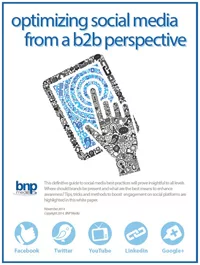How to Launch an e-Catalog 'A Key Determinant of Success in Internet Economy'

"A key determinant of success in the Internet economy will be the ability to digitize, manage and distribute information in the form of an electronic catalog that meets end-users' unique and varied requirements."
Companies in many industries are beginning to heed this advice offered by the Boston-based Aberdeen Group. From a marketing perspective, manufacturers and distributors are in a strong, strategic position to take advantage of e-commerce technology. That's because for decades manufacturers and distributors have done an excellent job of doing what the Internet now does in a new way: provide customers with useful product information and take product orders.
The key to successfully launching an e-catalog for your company is understanding that it goes hand-in-hand with your printed catalog. Today, traditional printed documents, the Internet and CD-ROMs are all just alternative ways to publish the same information. With proper planning, you can publish in all of these media simultaneously and synergistically, without wasted efforts.
Nearly all companies will hire an outside e-commerce consultant to help them get online. But serious problems can arise when you manage and update your company's e-catalog separately from your traditional print catalog. This article outlines what to expect from an e-catalog consultant and provides guidelines and tips to help you make sure that the system you put into place will be successful.
Your Database:
It's All About Information
Traditionally, the heart and soul of sales is the product catalog. These days, the information in that catalog, including product descriptions, photographs and price information, can all be stored, organized and updated in a single computer database. From that database, you can print traditional catalogs, launch a Web site or publish your catalog as a CD-ROM.The first step to a successful e-commerce venture is getting your database in order. That means you have to first choose the right database strategy and then organize your information in the database in a way that is most useful.
Choosing the right database strategy -- All databases are not created equal. A poorly designed database can be slow, hard to handle and difficult to expand as you add new products. A poorly implemented database -- or one that is unsuitable for its intended use -- may also negatively affect performance. A consultant can help you select a strategy that works with the computers and programs you are already using in your company. A consultant should also make sure that it works with standard systems found on the Internet, particularly those of industry portal Web sites. Such Web sites can act as a gateway for your product information to reach other industry-specific sites.
Standardizing your data -- Once you've selected the most appropriate database, you will need to analyze and standardize your product information. This data is scattered throughout your company in a variety of forms: on people's computers, in three-ringed binders, in printed catalogs, and in the minds of your engineers and salespeople. There are three kinds of data analyses you need to conduct.
- Review existing product information. Check to see what you have in existing databases, images, technical drawings, pricing spreadsheets, etc. Devise a plan to convert that information into a standard electronic format for use in your new system.
- Check for missing information. After you've collected all the existing information, check if anything is missing -- elements that would enhance the product information. Maybe you've overlooked detailed product descriptions, graphics or technical specifications.
- Organize product lines. Once you have gathered all the product information, you will need to organize it. Interview all individuals who will be contributing information to the database, such as product managers and marketing staff, to define product families and the product features and attributes required for each family.
Authoring and Data-Management Tools
Once you've selected the right database strategy and assessed, collected and organized information you currently have in-house, the time comes for actually building your database. And that brings us to the tools you'll need to create and manage the information in your database.- Editorial Interface -- Information is entered and updated in a database using an editorial interface. This is nothing more than a computer program that allows individuals to input their information in a standardized format. Imagine a computer screen with fill in the blanks.
Work-Flow Program -- Because many departments and individuals will enter and update product information into your database, it is important to build a work-flow program into your system. Such a program ensures that your organization's approval requirements are met and that there is proper oversight by supervisors of the work that is being done.
Publishing Your Information
At this point, you have your database program in place, connected with authoring and work-flow management programs. You have information flowing into the database from "content authors" with proper oversight and approvals. Now you have a valuable collection of standardized information. It's time to let the world know about it.The steps you've taken up to this point enable your organization to publish in many different ways: on the Web, in print and on CD-ROM. Let's take a look at each publishing option individually.
- Web publishing -- Web-authoring software is used to create a Web-based e-catalog. The Web catalog will need dynamic search and data presentation to meet the needs of all users. Different people -- customer service representatives, salespeople, prospective customers and channel partners -- need various types of information, and they often prefer to access it in different ways. They must be able to easily find the products they need, as well as view all of the supporting information so they can buy or recommend products.
Print publishing -- In spite of all the predictions about the paperless office, print remains a viable communication tool. Printed catalogs are handy and preferred by many customers. With a print publishing program, your company can produce catalogs from your central database. You can create full product line or specialty catalogs from your central database, with the assurance that all product information is as accurate and up-to-date as possible.
CD-ROM -- Some customers will appreciate receiving your product information on a CD-ROM. On CD, the catalog can look and operate like an online catalog. While the CD-ROM catalog may look like the online version, it will typically run faster and won't require the customer to be online. Distribution of CDs also is less costly than print distribution. Typically, a third-party vendor produces the CDs.
Getting Customer Feedback
Now that you've organized your information and made it available via several different media, you will soon hear back from your customers. They are going to want to ask questions and place orders.There are a lot of ways to let your customers interact with you, from the extremely simple to the thoroughly sophisticated. At the simple end of the spectrum, customers visiting your Internet catalog can send an e-mail to your customer-service department, asking questions or placing orders.
At the other end of the spectrum is the fully integrated system that allows customers to place orders online. The transaction passes to an existing inventory system, which tells the customer if the item is in stock. Then the final order is approved and processed in the existing order-entry system.
A fully integrated system provides you with up-to-the-minute sales and inventory information. The customer's shipping, billing and purchase information is collected automatically. All of this information is valuable in measuring the success of sales and marketing programs and gives management the tools it needs to make decisions about the direction of future marketing plans.
Summary
Think about your company's content management needs in an integrated way. Ask your vendors hard questions, and get the system that your company needs. When all the pieces work together, your company stands to gain multiple benefits -- and achieve success in the Internet economy.Looking for a reprint of this article?
From high-res PDFs to custom plaques, order your copy today!







